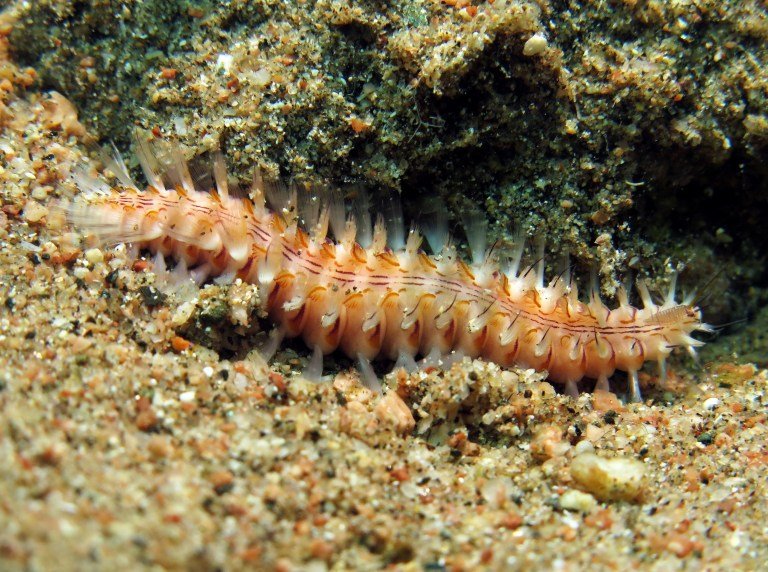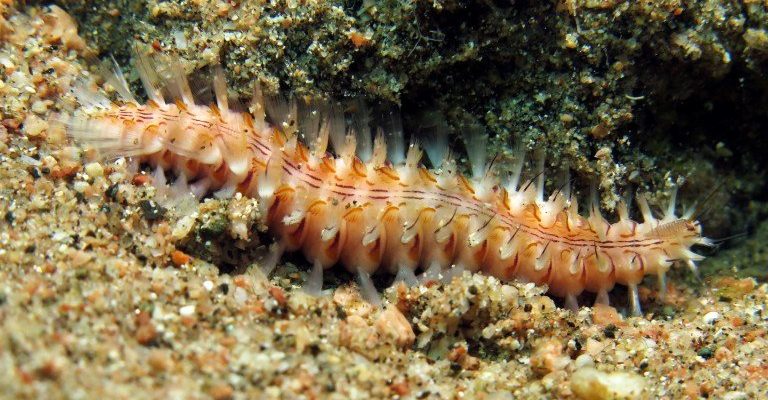
Imagine bristle worms as the clean-up crew of your tank. They’re not quite the star fish or the dramatic coral, but they play a vital role in the ecosystem. With their long, segmented bodies and bristles that almost look like tiny hairs, they might remind you of those quirky plants that seem to grow everywhere. It’s their diet, however, that really sets them apart from the full-time residents in your aquarium.
What are Bristle Worms?
Bristle worms belong to a group of marine animals called polychaetes, which are part of the annelid family. Picture them as small, flexible worms that can vary in color, with some sporting bright hues while others are more muted. They’re often found in the substrate of your tank, creeping around where it’s dark and cozy. These guys can reach impressive sizes, even up to a foot long in some species!
You might not spot them right away since they’re masters of hiding. But don’t be alarmed if you do see one! They’re usually harmless and can actually benefit your tank by helping to break down waste. They come out mostly at night, like little night crawlers in a garden, so keep an eye out during the darker hours for some bristle worm activity.
Do Bristle Worms Eat Fish Food?
Now, let’s tackle the big question: do bristle worms eat fish food? The simple answer is yes, but with some caveats. These worms are scavengers, meaning they’ll munch on whatever food particles sink to the bottom of the tank. So, if there’s leftover fish food floating around, you can bet the bristle worms will be happy to gobble it up.
However, they don’t have a preference for fish food. If you think about it, they’re like kids at a buffet. They’ll eat the fish food if it’s there, but they also enjoy a more diverse menu. Think of them as opportunistic feeders; they’ll take whatever they can find, whether it’s decomposing plant matter, algae, or even detritus from the substrate. It’s like scavenging leftovers that others have left behind.
Do Bristle Worms Prefer Live Prey?
Here’s the kicker: while bristle worms can eat fish food, they also have a taste for live prey. This doesn’t mean they’re plotting against your fish, though! Most bristle worms prefer smaller organisms like tiny crustaceans or larvae. These are more akin to a gourmet meal rather than the everyday snacks they find in leftover fish food.
When they come across live prey, they’ll use their bristles to grip and consume it. Imagine them using those bristles like fingers to catch their food. However, you don’t need to worry too much about bristle worms taking down fish in your tank; they’re more likely to stick to smaller, less mobile creatures.
How to Manage Bristle Worm Populations
If you find that bristle worms are becoming a bit too numerous in your aquarium, it’s important to manage their population. They can, at times, become the unwelcome guests of your underwater dinner party. Here are a few tips for keeping their numbers in check:
- Avoid Overfeeding: Make sure you’re not overdoing it with the fish food. Leftover food is like a buffet for bristle worms. Feed your fish only what they can consume in a few minutes.
- Regular Tank Maintenance: Clean your tank regularly to remove uneaten food and waste. Keeping the tank tidy can help reduce the bristle worm’s food supply.
- Introduce Predators: Consider adding tank mates that enjoy a little worm snack. Some fish and invertebrates will eat bristle worms if they’re not overfed.
With a bit of attention, you can keep the bristle worms from taking over your tank while still benefiting from their cleaning abilities.
Are Bristle Worms Good or Bad for Your Aquarium?
Whether bristle worms are good or bad really depends on your aquarium’s ecosystem and your personal perspective. Many aquarists appreciate them for their role in breaking down waste. They help keep your substrate clean, turning detritus into nutrients for your plants and corals. They’re like the unsung heroes of the tank!
On the other hand, if their population balloons out of control, they could become a nuisance. Too many bristle worms might mean there’s an imbalance in your tank, possibly from overfeeding or inadequate filtration. It’s essential to find a balance that suits your aquatic environment.
So, what have we learned about bristle worms? They’re not just random critters lurking in the shadows of your tank. These scavengers play an important role in the health of your aquarium, munching on leftovers and helping to maintain balance. While they’ll happily eat fish food, they also enjoy a diverse menu that includes live prey.
Understanding these little creatures can help you decide how to manage them in your home aquarium. By keeping an eye on their food source and population, you can ensure they remain a beneficial part of your underwater world. So, the next time you spot a bristle worm, remember they’re just doing their part to keep the ecosystem healthy—and maybe even give them a little nod of appreciation!

